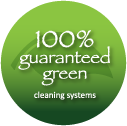How to Clean Wood Floors and Best Dust Mops
By Naturally Clean
Hardwood floors add charm and beauty to any home. They require special care, though, to remain scratch-free and looking their best. Keep reading to learn how to clean wood floors.
Cleaning Hardwood Floors
The first rule of caring for hardwood floors is, “Dust mop often.” Dirt and dust particles can scratch your floors when dragged underneath shoes and trapped below rugs. Using a dust mop instead of a broom allows you to attract and collect dirt, as opposed to pushing it across the floor surface and potentially scratching it.
You can also use a vacuum on hardwood floors, but be sure to use the bare-floor setting, which lifts the beater bar, another potential cause of scratches. Dust mopping gets dust and debris from areas a vacuum can’t reach, and a vacuum has the power to lift the same from between boards, which a dust mop does not always do.
To clean sealed hardwood floors more deeply, use a damp mop with a solution of hot water. You don’t need any floor products. Water is a solvent and will naturally lift dirt. Floor products contain chemicals and a surfactant (detergent) which can leave a milky residue on the floors. Also, when cleaning the floors, follow the grain of the wood for a smooth non streaky finish.
Finally, to reduce the frequency of cleaning, and therefore the potential for scratches, place runners and area rugs with slip-resistant backings in entry and high-traffic areas. This cuts down on the amount of dirt and debris that makes it onto your floors. It also wouldn’t hurt to have residents and guests remove shoes at the door, especially during winter weather that brings with it the use of damaging road salt.
Dust Mops for Wood Floors
As mentioned above, the best tool for cleaning hardwood floors is a dust mop, but you may be new to this type of flooring and this type of mop. A dust mop consists of a handle and base with a soft cover. The handle typically swivels, making it easy to move around the floor. Covers come in cotton and synthetic materials.
Cotton covers attract a fair amount of dirt and dust particles. There are cleaning solutions available that help to grab even more, but do not use them on hardwood floors as they leave behind a residue that actually attracts dirt and dust. You either shake loose what you’ve picked up or toss the cover in the washing machine.
Synthetic fiber covers contain yarn or plastic fibers, with microfiber using very fine fibers. This type of cover uses static electricity to attract more dirt and dust particles than cotton. They also shake loose or go into the washing machine for cleaning, and they get cleaner in the wash and last longer than the natural material. Cotton covers are less expensive than microfiber but cost more in the long run because of how much more frequently you must replace them.
No matter which type of dust mop you choose, start the floor cleaning process by taking all runners and area rugs outside to shake or into the laundry room to wash. Place the dust mop on the floor against one wall. Push the mop around the perimeter of the room, keeping it on the floor and working your way to the center.
Once at the center with all surfaces mopped, pick up any dirt and dust particles pushed there with a dustpan or broom, or you can vacuum as noted above with the beater bars off. Then carefully take your dust mop outdoors to shake, and then into the laundry room if it requires further cleaning. Replace runners and area rugs.
For your home cleaning needs, call the professionals at Naturally Clean, 519-572-3763. We service the Kitchener Waterloo area, Cambridge, and Guelph.




